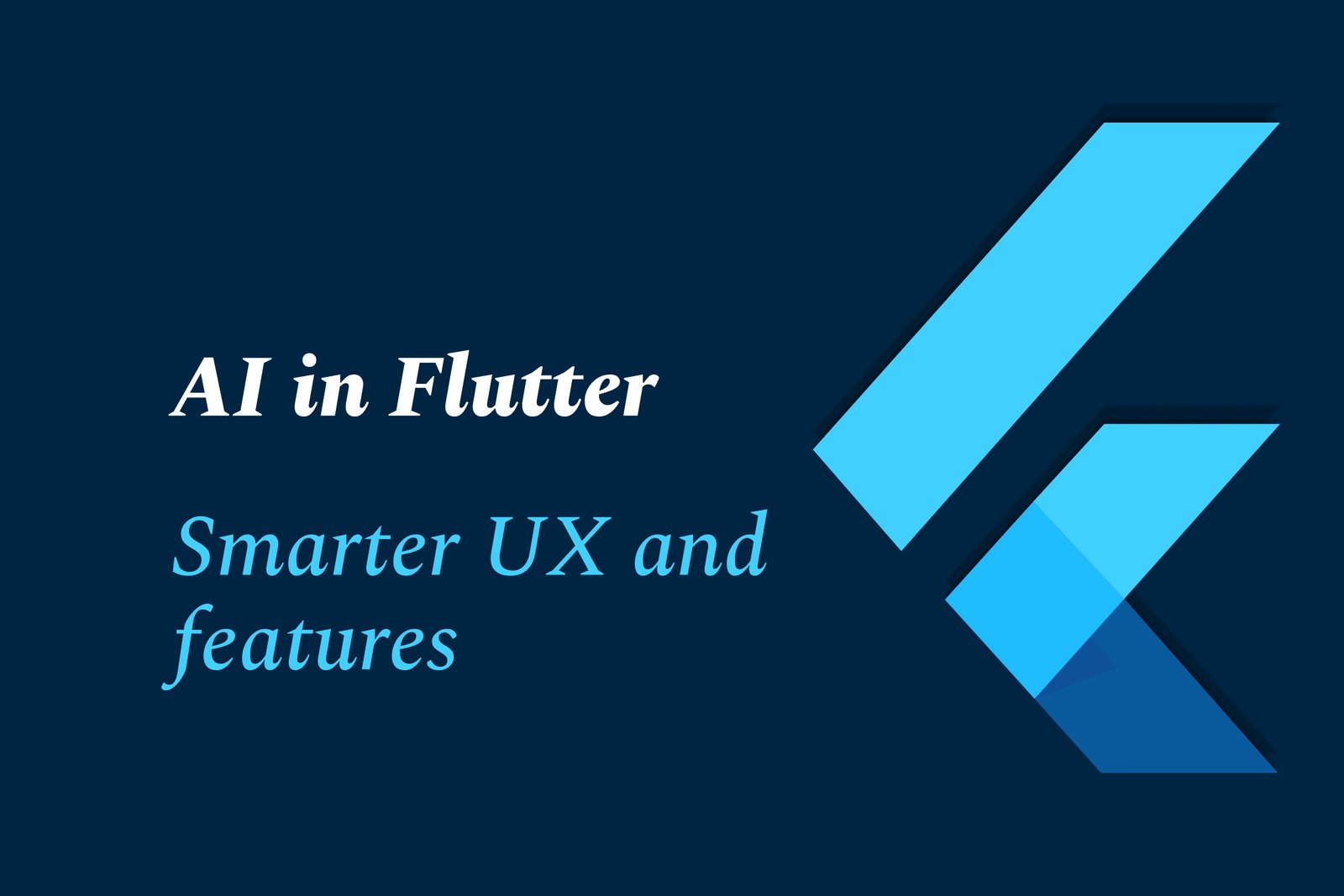AI in flutter: smarter UX and features
AI in Flutter combines Flutter’s powerful cross-platform UI framework with artificial intelligence to create smarter, more personalized apps. It enables features like voice assistants, recommendation systems, and on-device inference, delivering faster, intuitive, and highly engaging user experiences.
AI in Flutter: Smarter UX and Features
1 ) Introduction to Flutter AI Integration
The integration of Artificial Intelligence (AI) with Flutter, Google's UI toolkit for building natively compiled applications, is revolutionizing mobile and cross platform app development. AI enhances Flutter apps by enabling intelligent automation during development, real time personalization, and smarter user interactions, resulting in apps that are faster, more scalable, and highly adaptive.
2 ) What Is Flutter AI?
Flutter AI is a development approach that combines Flutter’s powerful UI framework with AI driven technologies such as machine learning, natural language processing, computer vision, and automation. It incorporates AI algorithms and pre trained models—via third party APIs or frameworks like TensorFlow Lite—directly within Flutter apps to provide enhanced, intelligent user experiences without needing separate tools.
3 ) Benefits of Combining Flutter and AI
Faster Development: Flutter’s hot reload and reusable components speed up iterations, even when integrating complex AI features.
Smarter User Experiences: AI enriched features like chatbots, voice assistants, recommendation systems, and image recognition create highly personalized and interactive apps.
Cross platform Efficiency: Develop once and deploy AI powered apps on both iOS and Android platforms using a single codebase.
On device Intelligence: Leveraging tools such as TensorFlow Lite enables AI processing on devices, improving performance and safeguarding user data privacy.
Cost effectiveness: Unified codebase plus AI driven automation reduces development time and costs.
4 ) How AI Enhances Flutter Apps
AI integration empowers Flutter apps in diverse ways, elevating functionalities and UX:
Personalized User Experiences: AI analyzes user behaviors and preferences to tailor content and interactions.
Automated Workflows: AI facilitates smarter forms, predictive text input, and intelligent automation behind the scenes.
Intelligent Assistants and Chatbots: Enable natural language conversation and multi turn dialogues for better support.
Computer Vision Capabilities: Incorporate object detection, facial recognition, and augmented reality enhancements.
Enhanced Accessibility: Speech to text, text to speech, and adaptive UI adjustments for users with diverse needs.
5 ) Tools and Best Practices for AI in Flutter Development
Utilize Flutter AI Toolkit and Google's AI services such as Gemini API, Firebase AI Logic, and Vertex AI for seamless integration.
Incorporate pre trained AI models or custom TensorFlow Lite models for on device inference.
Employ AI powered design tools and plugins to accelerate UI/UX creation and prototyping.
Follow modular development and iterative testing to refine AI features efficiently.
Emphasize data privacy and security due to on device AI and user data handling.
6 ) Real world Use Cases and Industry Impact
Industries leveraging Flutter AI include fintech, healthcare, e commerce, media, and fleet management, among others. AI powered Flutter apps enable smarter decision making, real time personalization, and operational automation. Businesses benefit from improved engagement, scalability, and competitive differentiation by adopting this approach.
7 ) Conclusion
The fusion of AI with Flutter represents the next evolution in mobile app development—delivering smarter, faster, and highly personalized applications. By harnessing AI’s capabilities within Flutter’s dynamic framework, developers and businesses can create innovative user experiences that meet the demands of modern, intelligent applications.
https://justacademy.in/news-detail/best-flutter-practices-every-developer-should-follow
https://justacademy.in/news-detail/major-companies-adopting-flutter-in-2025
https://justacademy.in/news-detail/google-i/o-2025-highlights:-flutter-takes-the-lead
https://justacademy.in/news-detail/flutter-ai-chatbot-integration-guide
https://justacademy.in/news-detail/what’s-deprecated-in-flutter-2025
Related Posts
In 2025, top Angular libraries offer modern, feature-rich components and tools for building dynamic web apps. From powerful data grids to low-code platforms like UI Bakery, these libraries enhance development speed, UI design, and scalability, making them essential for Angular developers.
Migrating from AngularJS to Angular 17 involves gradually upgrading your app by running both frameworks together using tools like ngUpgrade, rewriting components in TypeScript, and adopting Angular’s modern architecture to enhance performance, maintainability, and long-term support.
Angular state management tools help organize and handle app data efficiently, improving scalability and maintainability. Popular options include NgRx for robust, RxJS-based patterns, and newer Signal Store solutions that offer simpler, reactive approaches integrated tightly with Angular’s latest features.
RxJS in Angular empowers developers to manage asynchronous data streams with powerful operators like `forkJoin`, `combineLatest`, and `zip`. Mastering these key operators in 2025 is essential for building efficient, reactive applications that handle complex event sequences seamlessly.
Angular performance optimization in 2025 focuses on improving app speed and responsiveness by using techniques like OnPush change detection, lazy loading, efficient data caching, and AOT compilation. These practices reduce load times, enhance user experience, and ensure scalable, fast Angular applications.
In 2025, Angular remains preferred for large-scale, enterprise apps with its robust, all-in-one framework, while Vue attracts developers seeking simplicity and fast development for smaller projects. Both frameworks excel, with choice driven by project needs and team expertise.
Angular Signals are a new reactive primitive in Angular 16 that enable fine-grained, efficient change detection by automatically tracking dependencies and updating only affected parts of the UI. They simplify state management and boost app performance, revolutionizing Angular's reactivity model.
Angular interview questions to prepare in 2025 focus on core concepts like components, directives, data binding, routing, and dependency injection, along with TypeScript mastery and latest Angular features to ensure strong practical knowledge for building scalable, efficient web applications.
AngularJS reached its official end of support in January 2022, meaning no further updates or security patches. To ensure app security and performance, developers should consider migrating to modern Angular versions or seek third-party long-term support options if immediate migration isn’t possible.
The Angular Roadmap 2025 highlights upcoming features focused on improving developer experience and performance, including zoneless Angular, Signals integration, enhanced Forms, async data handling, improved HMR, and expanded Angular Material/CDK enhancements, driving modern, efficient web app development.










